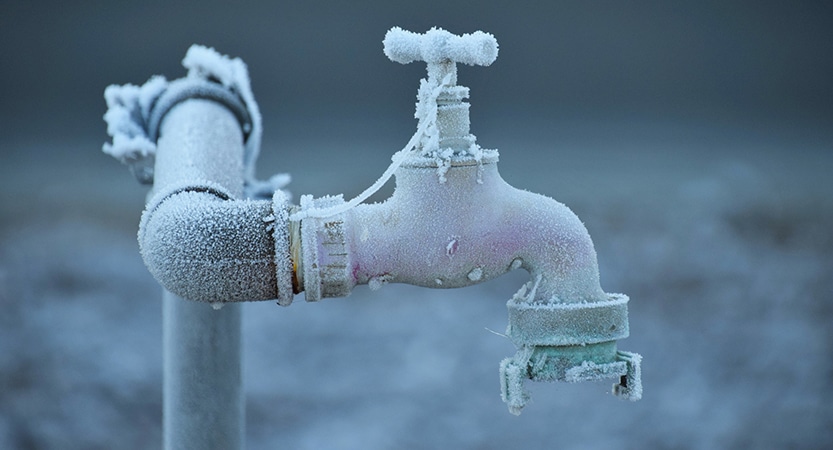Essential Tips to Avoid Frozen Pipes in Cold Weather: Expert Insights
Essential Tips to Avoid Frozen Pipes in Cold Weather: Expert Insights
Blog Article
How do you feel when it comes to Winter Plumbing Precautions: Preventing Frozen Pipes?

Winter can wreak havoc on your pipes, particularly by freezing pipes. Below's exactly how to stop it from occurring and what to do if it does.
Introduction
As temperatures decline, the danger of icy pipes increases, possibly leading to pricey fixings and water damage. Understanding exactly how to stop icy pipelines is essential for property owners in cool climates.
Recognizing Frozen Pipes
What creates pipes to ice up?
Pipelines freeze when exposed to temperatures listed below 32 ° F (0 ° C) for extended periods. As water inside the pipelines ices up, it expands, putting pressure on the pipe walls and potentially creating them to break.
Risks and problems
Frozen pipes can lead to water system disruptions, building damages, and costly repair services. Ruptured pipelines can flooding homes and create substantial architectural damages.
Signs of Frozen Pipes
Determining frozen pipelines early can avoid them from rupturing.
Exactly how to determine frozen pipes
Seek decreased water circulation from taps, uncommon odors or noises from pipelines, and visible frost on exposed pipes.
Prevention Tips
Protecting susceptible pipes
Cover pipelines in insulation sleeves or make use of heat tape to protect them from freezing temperatures. Focus on pipelines in unheated or external areas of the home.
Heating strategies
Maintain indoor areas sufficiently heated up, especially areas with plumbing. Open up closet doors to enable cozy air to circulate around pipes under sinks.
Shielding Outside Pipes
Yard hoses and outside faucets
Detach and drain garden tubes before winter season. Install frost-proof spigots or cover outdoor faucets with protected caps.
What to Do If Your Pipelines Freeze
Immediate activities to take
If you think frozen pipes, maintain taps open to ease pressure as the ice thaws. Utilize a hairdryer or towels taken in warm water to thaw pipes gradually.
Long-Term Solutions
Structural changes
Think about rerouting pipelines away from outside wall surfaces or unheated locations. Add extra insulation to attics, cellars, and crawl spaces.
Upgrading insulation
Purchase high-quality insulation for pipelines, attics, and walls. Correct insulation aids preserve constant temperatures and reduces the risk of frozen pipelines.
Verdict
Avoiding icy pipes calls for aggressive actions and quick feedbacks. By recognizing the reasons, signs, and safety nets, home owners can protect their plumbing throughout cold weather.
5 Ways to Prevent Frozen Pipes
Drain Outdoor Faucets and Disconnect Hoses
First, close the shut-off valve that controls the flow of water in the pipe to your outdoor faucet. Then, head outside to disconnect and drain your hose and open the outdoor faucet to allow the water to completely drain out of the line. Turn off the faucet when done. Finally, head back to the shut-off valve and drain the remaining water inside the pipe into a bucket or container. Additionally, if you have a home irrigation system, you should consider hiring an expert to clear the system of water each year.
Insulate Pipes
One of the best and most cost-effective methods for preventing frozen water pipes is to wrap your pipes with insulation. This is especially important for areas in your home that aren’t exposed to heat, such as an attic. We suggest using foam sleeves, which can typically be found at your local hardware store.
Keep Heat Running at 65
Your pipes are located inside your walls, and the temperature there is much colder than the rest of the house. To prevent your pipes from freezing, The Insurance Information Institute suggests that you keep your home heated to at least 65 degrees, even when traveling. You may want to invest in smart devices that can keep an eye on the temperature in your home while you’re away.
Leave Water Dripping
Moving water — even a small trickle — can prevent ice from forming inside your pipes. When freezing temps are imminent, start a drip of water from all faucets that serve exposed pipes. Leaving a few faucets running will also help relieve pressure inside the pipes and help prevent a rupture if the water inside freezes.
Open Cupboard Doors
Warm your kitchen and bathroom pipes by opening cupboards and vanities. You should also leave your interior doors ajar to help warm air circulate evenly throughout your home.

I was introduced to that report on Helpful Tips to Prevent Frozen Pipes this Winter through a pal on a different web address. Enjoyed reading our post? Please quickly share it. Help others find it. Kudos for your time. Please check up our site back soon.
Click Here Report this page